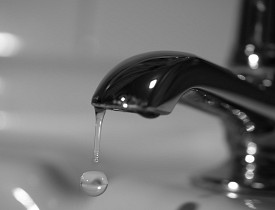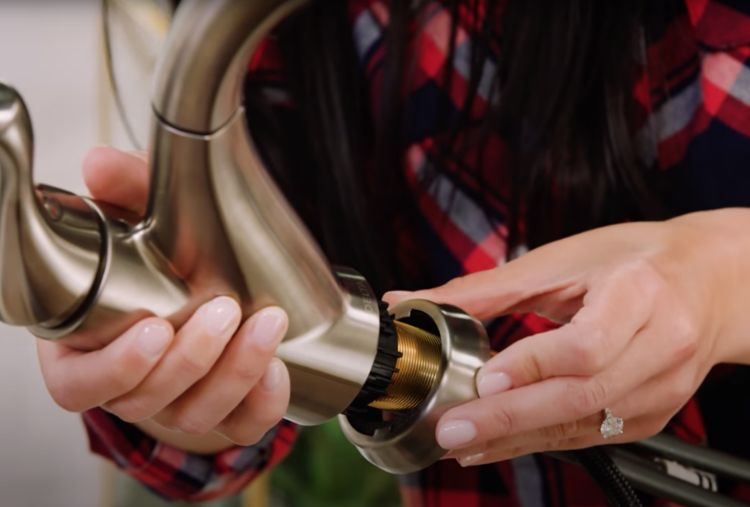Discovering the Significance of Correcting a Malfunctioning Faucet
Discovering the Significance of Correcting a Malfunctioning Faucet
Blog Article
In this article on the next paragraphs yow will discover additional worthwhile material on the subject of Leaky Faucets: Why They Happen & What to Do About Them.

Trickling taps could look like a minor aggravation, but their influence exceeds simply the inconvenience of the sound. From drainage to incurring unnecessary financial costs and health risks, neglecting a leaking tap can bring about numerous repercussions. In this post, we'll explore why it's important to address this usual house concern promptly and properly.
Waste of Water
Ecological Influence
Dripping taps add significantly to water wastefulness. According to the Epa (EPA), a single tap dripping at one drip per secondly can lose greater than 3,000 gallons of water annually. This not just stress water resources however additionally impacts ecological communities and wild animals depending on them.
Financial Expenses
Raised Water Bills
Past the ecological influence, dripping taps can inflate water bills significantly. The gathered waste with time translates right into higher energy costs, which can have been avoided with timely fixings.
Prospective Home Damages
In addition, prolonged trickling can cause damage to components and surfaces surrounding the faucet. Water build-up can trigger discoloration, rust, and even architectural problems if left ignored, resulting in additional repair work expenses.
Wellness Worries
Mold And Mildew and Mildew Development
The continuous presence of wetness from a trickling faucet develops an ideal atmosphere for mold and mildew development. These fungis not only compromise interior air high quality however likewise posture health risks, specifically for individuals with respiratory conditions or allergic reactions.
Waterborne Illness
Stationary water in trickling taps can become a breeding ground for bacteria and other pathogens, increasing the danger of waterborne conditions. Contaminants such as Legionella bacteria thrive in stagnant water, potentially bring about major health problems when consumed or breathed in.
Do it yourself vs. Expert Repair work
Pros and Cons of Do It Yourself Repair Service
While some may attempt to fix a dripping tap themselves, do it yourself fixings include their own collection of challenges. Without appropriate understanding and tools, do it yourself efforts can worsen the concern or cause incomplete repair services, extending the problem.
Advantages of Working With a Specialist Plumber
Hiring a specialist plumber makes certain that the underlying root cause of the trickling tap is attended to efficiently. Plumbing technicians possess the know-how and devices to detect and repair tap concerns efficiently, conserving time and lessening the danger of more damage.
Step-by-Step Guide to Dealing With a Dripping Tap
Tools Required
Prior to trying to deal with a trickling tap, collect the required devices, consisting of a flexible wrench, screwdrivers, substitute components (such as washers or cartridges), and plumber's tape.
Common Tap Issues and Their Solutions
Determine the type of tap and the details concern triggering the drip. Common problems include damaged washers, rusty valve seats, or defective O-rings. Describe supplier directions or online tutorials for detailed support on fixings.
Preventive Measures
Routine Upkeep Tips
To prevent leaking faucets, do routine upkeep such as cleansing aerators, examining for leaks, and changing damaged parts immediately. In addition, think about mounting water-saving tools or upgrading to a lot more effective fixtures.
Value of Prompt Repair Works
Addressing trickling taps as quickly as they're seen avoids additional water waste and prospective damages, inevitably saving both water and cash in the future.
Influence On Building Worth
Assumption of Well-Maintained Residential Property
Maintaining a residential or commercial property in good condition, consisting of resolving upkeep problems like leaking taps, enhances its viewed worth and worth among potential customers or renters.
Influence on Resale Worth
Features with well-kept plumbing components, consisting of faucets, command greater resale values in the real estate market. Dealing with leaking faucets can contribute to a positive impact during residential or commercial property evaluations and arrangements.
Environmental Duty
Individual Payment to Preservation
Taking duty for dealing with dripping taps straightens with wider efforts towards water conservation and ecological sustainability. Every person's actions jointly make a considerable impact on preserving valuable sources.
Lasting Living Practices
By prioritizing punctual repair work and embracing water-saving practices, individuals contribute to sustainable living techniques that profit both existing and future generations.
Conclusion
Dealing with a leaking faucet goes beyond simple benefit; it's an essential action towards saving water, lowering monetary costs, and protecting health and wellness and residential or commercial property. Whether via DIY fixings or professional support, doing something about it to take care of trickling faucets is a small yet impactful way to advertise responsible stewardship of resources and contribute to a healthier, more sustainable future.
Most Common Reasons for a Leaky Faucet and How to Stop the Drip
Whether it’s your kitchen faucet leaking or a bathroom faucet leaking, one leaky faucet can waste anywhere from three to 30 gallons of water every single day. If the constant drip-drip-drip doesn’t get your attention, your water bill will. The good news is that, by following a few simple steps, chances are pretty good you can fix the problem yourself.
Why is it dripping?
Before you start taking things apart, let’s break down some of the most common causes of a leaky faucet.
Bad O-ring.
A cartridge is a valve that controls the flow of water into the faucet spout. On cartridge faucets there’s an O-ring—the little disc attached to the stem screw that holds the faucet handle in place. If it’s loose or worn-out, it can cause your sink handle to leak. Of course, the cartridge itself could be worn out. If that’s the case, make sure you replace it with the exact same kind.
Corroded valve seat.
The valve seat connects the faucet and the spout. If the leak seems to be coming from the spout, it might be because a buildup of water sediment has corroded the valve seat.
Worn-out washers or seals.
A leaky spout could be caused by a bad washer that rests against the valve seat. It’s just a matter of time before friction takes its toll. It could also be the wrong size washer or one that’s been installed incorrectly. Water sediments can also corrode inlet and outlet seals.
Water pressure.
If the faucet only drips now and then, or when you turn the handles a certain way, you should probably check your home’s water pressure.
Loose or broken parts.
The adjusting ring and packing nuts in the stream screw can become loose over time, causing your sink handle to leak. Try tightening or replacing the packing nut. If the leak is coming from the pipes underneath the sink, you probably have a broken pipe or fitting. If that’s the case, you should definitely call a plumber.
Know your faucet.
Faucets come in a variety of types. Each one has its own assembly—and its own possible causes of leaks. Learning about the four most common kinds of faucets will help you know how to take them apart and make any repairs.
How to stop a leaky faucet
Fixing that leaky faucet doesn’t have to take a lot of time, money, or expertise. It’s usually a simple matter of replacing a worn-out washer or gasket, a loose O ring, or another part. Chances are really good you can do this yourself if you follow these simple steps.
Shut off the water.
Before you tackle the faucet, cut off the water supply to the sink. There should be one valve for hot and one for cold. Hand-turn them clockwise with your hands till they close. If there are no valves under the sink, head to the basement and shut off the main water supply to the house. Then turn on the faucet until it empties out the water that’s still in the line and you’re ready to start. It’s a good idea to cover the sink drain with a plug or a rag so you don’t lose any small pieces and parts while you’re working.

We were made aware of that report on Why It's Important to Fix Leaky Faucets through a pal on our other website. Sharing is caring. Who knows, you could be doing someone a favor. Thanks a bunch for your time. Come back soon.
Report this page